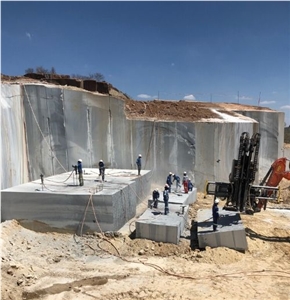Unearthing the Rich History and Sustainable Practices of Granite Quarrying
As we depend on the precipice of uncovering the complex tapestry of granite quarrying, a journey through time exposes not simply the physical act of drawing out stone however also the social and historical value woven into the really fabric of this technique. From the ancient origins that laid the structure for contemporary quarrying strategies to the sustainable practices that are shaping the future of this industry, each carve mark on granite surfaces informs a story waiting to be unearthed (granite quarries in south africa). The legacy of granite quarrying extends much past plain removal; it is a testament to human resourcefulness, resilience, and the long-lasting attraction of this impressive stone
Ancient Beginnings of Granite Quarrying
Dating back to ancient worlds, the practice of quarrying granite has actually been an integral component of human background and building improvement. The earliest proof of granite quarrying go back to old Egypt, where massive pyramids and elaborate sculptures were crafted from this sturdy stone. The Egyptians made use of primitive tools to remove granite blocks from quarries, showcasing the relevance of this material in their huge buildings.
Moving ahead in background, the Greeks likewise made significant contributions to the quarrying of granite. The Greeks made use of granite in numerous architectural marvels, such as temples and statues, demonstrating their skill in shaping and carving this sturdy rock. The Romans better refined the strategies of quarrying granite, utilizing sophisticated devices like blades and hammers to remove and form granite for their famous frameworks.
Via the centuries, the practice of quarrying granite has advanced, with modern-day technologies boosting efficiency while keeping the timeless charm of this natural rock - granite quarries in south africa. From old human beings to contemporary home builders, the tradition of granite quarrying remains to form our world
Evolution of Quarrying Methods
The advancement of quarrying techniques has actually been marked by a continual development in the direction of better efficiency and accuracy in extracting granite. Early quarrying strategies included hand-operated labor with fundamental devices such as chisels, hammers, and wedges to extract granite blocks from the earth.
Improvements in computer-controlled devices and 3D modeling have optimized quarrying procedures, leading to marginal ecological effect and boosted sustainability techniques. As the need for granite proceeds to increase, the development of quarrying strategies continues to be essential to meeting industry needs effectively and sustainably.
Social Importance of Granite
Granite holds a profound cultural relevance across numerous people due to its long-lasting visibility in architectural masterpieces and revered monuments. From the stunning pyramids of Egypt to the elaborate carvings of the Angkor Wat holy place in Cambodia, granite has actually been a material of selection for expressing click for source magnificence and long life in cultural heritage. In ancient Rome, granite columns embellished holy places and public buildings, representing toughness and durability. The social relevance of granite extends past its physical qualities; it symbolizes resilience, security, and timelessness, making it an icon of sustaining legacies and traditions.

Lasting Practices in Quarrying
Among the rich background of granite quarrying and its redirected here cultural relevance exists a growing emphasis on lasting methods within the market. As ecological understanding and problems about source deficiency have enhanced internationally, the quarrying industry has increasingly accepted lasting approaches to lessen its influence on official source the setting and bordering areas.

In addition, recovery and recovery of quarry sites post-extraction are important to sustainable methods. By bring back quarried areas to an all-natural or advantageous state, such as producing wild animals habitats or entertainment rooms, quarriers can balance out the environmental footprint of their operations and contribute positively to the neighborhood community.
Heritage of Granite Quarrying
With a historic backdrop soaked in workmanship and commercial progression, what sustaining influence has granite quarrying left on the landscape of modern culture? The tradition of granite quarrying transcends mere extraction practices; it has actually formed building wonders, metropolitan landscapes, and cultural heritage worldwide. The durable nature of granite has made it a favored option for monuments, buildings, and framework, standing as a testament to the ability and creativity of quarry workers throughout generations.
In addition, the financial impact of granite quarrying can not be ignored. The market remains to supply work possibilities and drive neighborhood economic situations in regions where granite removal is widespread. It has additionally stimulated technological developments in quarrying strategies and devices, bring about extra reliable and lasting practices.
In regards to sustainability, the legacy of granite quarrying consists of efforts to alleviate ecological influences through recovery jobs and accountable source management. By balancing economic passions with ecological stewardship, the industry makes every effort to make sure that future generations can proceed to benefit from this long-lasting natural resource.
Conclusion
